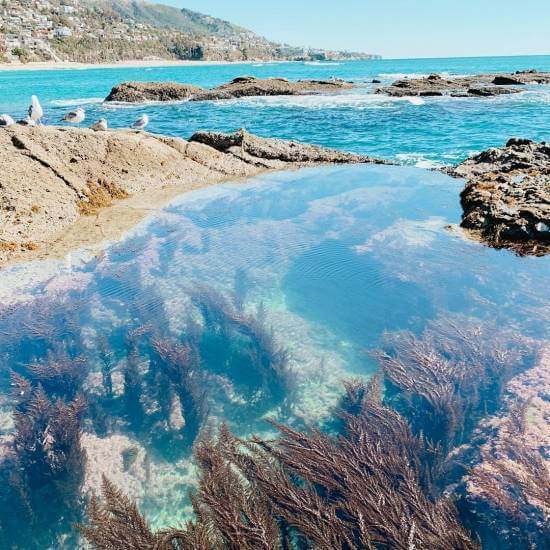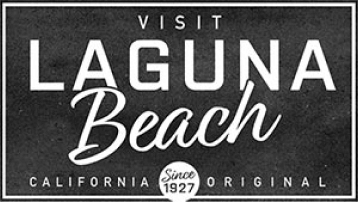
Laguna Beach Tide Pools Information
Visiting our protected Laguna Beach tide pools provide for a fun and informative way for everyone to learn about marine life as well as ocean conservation.
The Best Beaches for Exploring Tide Pools:
Unlike its neighboring cities to the north and south in Orange County, Laguna Beach is known for its spectacular tide pooling. These special ecosystems in Laguna Beach (and elsewhere in California) are part of our Marine Protected Environment and therefore thrive since they are protected against fishing, touching or harvesting.
- Crescent Bay Beach
- Diver’s Cove
- Main Beach
- Rockpile Beach
- Shaw’s Cove
- Thousand Steps
- Treasure Island
- Woods Cove
What is a Tide Pool?
Tide pools are found in intertidal zones, which are areas where the ocean meets the land: from steep, rocky ledges to long, sloping sandy beaches. These formations create isolated pockets of sea water resulting unique ecosystems filled with a wide variety of ocean life uniquely adapted to the tidal pool environment.(source)
What Kind of Animals Can be Found in a Tide Pool?
Laguna Beach tide pools are home to an amazing array of underwater marine life including octopus, snails, sea slugs, limpets, barnacles, sea cucumber, mussels, anemone, urchins, sea stars, crustaceans (including hermit crabs and other varieties), as well as plants like kelp, seaweed, and small fish like blennys, gobies, and sculpins.
Above the water’s surface, tide pools are also important habitat for wading birds native to California like heron and egrets, that feed on the sea life contained in them. (source)
During the extremely low tides that take place during the winter months (November-March), even more aquatic life can be seen further from the shore in the lower zones. Get a glimpse of creatures like abalone, chiton, lobster, and moray eels. (source)
When is the best time to view tide pool organisms?
Tides go in and out twice every 24 hours and 50 minutes (due to the gravitational forces exerted on the Earth by the moon) – low tides are typically in the early morning and in the evening. Just like sunrise and sunset, the times vary day to day throughout the year. (source)
The best way to identify low tide is to use a tide chart or tide schedule like the one published by TidesChart or check the latest data from the NOAA station on Santa Catalina Island.
What is a Marine Protected Area (MPA)?
A marine reserve or “no take” MPA is a highly protected type of MPA where removing or destroying natural or cultural resources is prohibited. Marine reserves are rare in the United States, with about 3 percent of U.S. waters in these no-take areas. Reserves protect whole ecosystems, allowing them to return toward a more natural and balanced state. (source)
How best to interact with the environment when tidepooling
Despite their ability to adapt, life here in the tide pools is susceptible to human impacts like climate change. Over the past few decades many native species have seriously declined in numbers – and some, like the black abalone, are near extinction. Exploring tide pools must be done safely and responsibly.
Collecting, trampling and harassment of these species has a dramatic impact on the survival of these special sea creatures and the preservation of this unique habitat. (source)
Rules to follow when tidepooling:
- Observe
- Be mindful of the tide
- NO touching
- NO taking
Why are Tide Pools Important?
Located in the intertidal zone (also called the littoral zone) between the ocean and the land, tide pools play a critical role in bridging those two ecosystems by producing a wealth of organisms that have adapted to the harsh conditions. Those species play an important part in the food chain both on land and in the ocean. (source)
In addition, tide pools play an important role in preventing erosion from the powerful forces of the waves and weather.
More Laguna Beach Tide Pool Information
From the deep, secluded pools at Thousand Steps to the easily accessible rock shelf at Crescent Bay, low tide in Laguna Beach has no shortage of marine life just waiting for you to explore. Anemones, hermit crabs, sea stars – there’s a whole world just below the water’s surface.
Visit the various pools at low tide and keep an eye on the swell – getting caught on the rocks with waves crashing can be dangerous. It’s also worth noting that you can’t take anything from the beaches of Laguna, as it’s a marine protected area. This is an adventure in which you’ll walk away with memories and leave nothing behind.
If you’re looking for beaches in Orange County that are easy to access with tide pools, Crescent, Diver’s, and Rockpile beaches all have plenty for you to marvel at. For first-timers or anyone eager for extra info, the pools at Main Beach and Treasure Island are easily accessible and often have docents on hand to guide your exploration.
Learn More About Our Tide Pools
Below are more resources to learn about tide pools:

